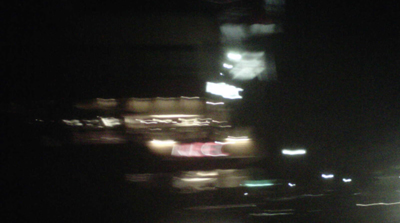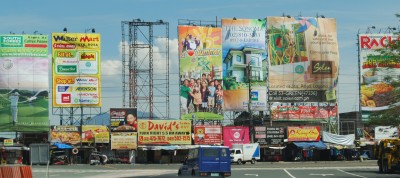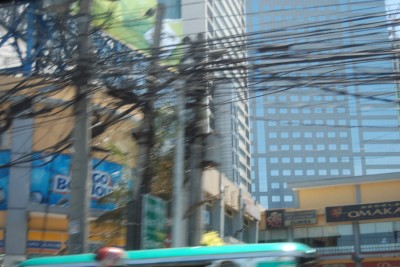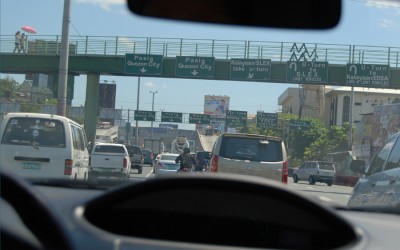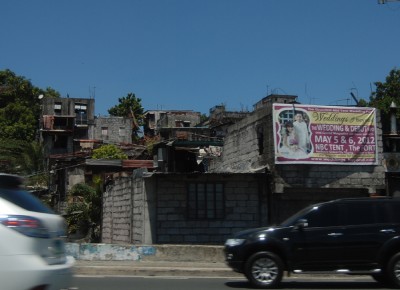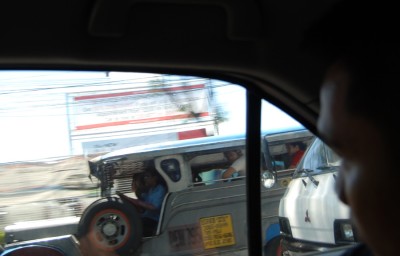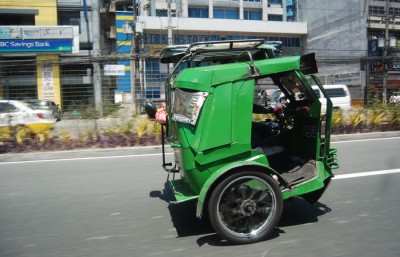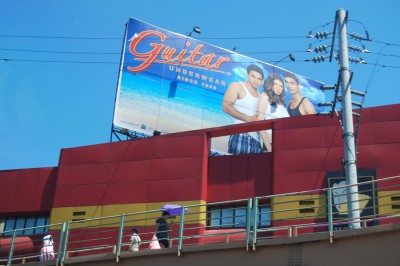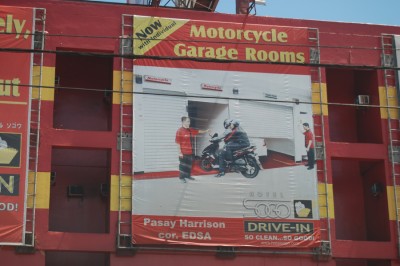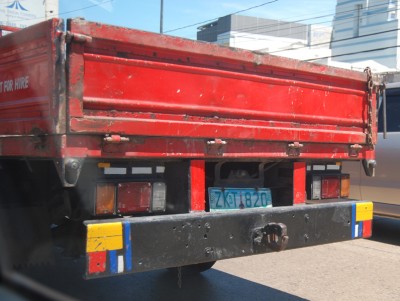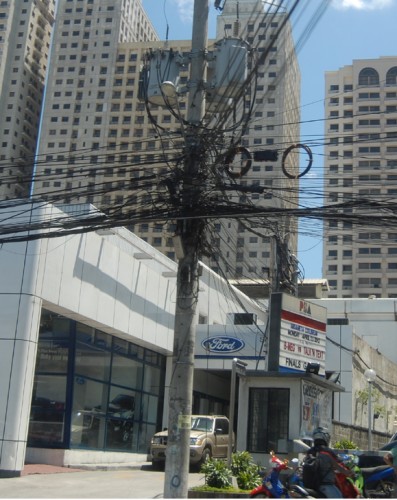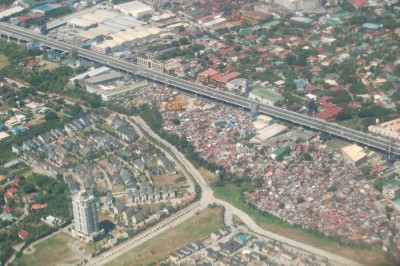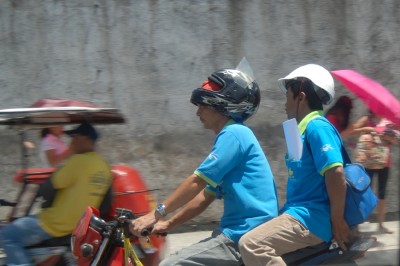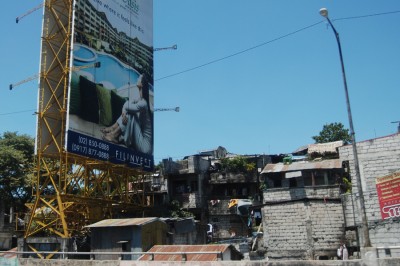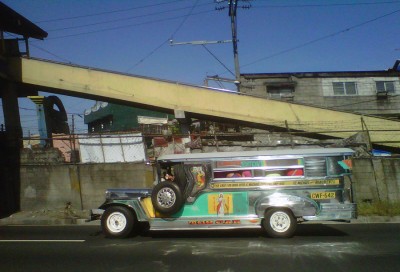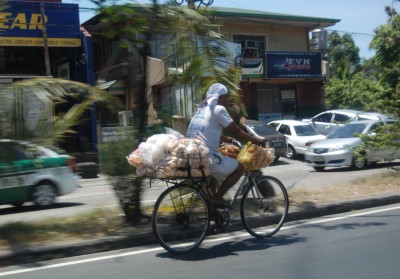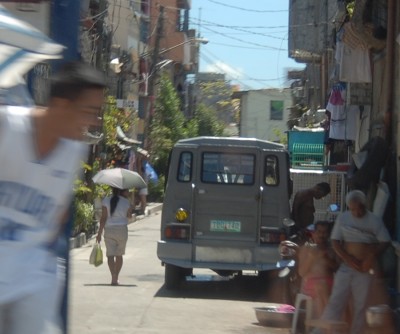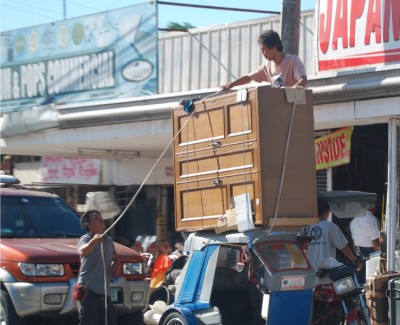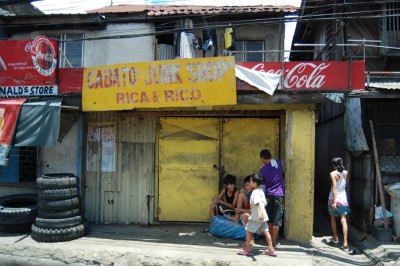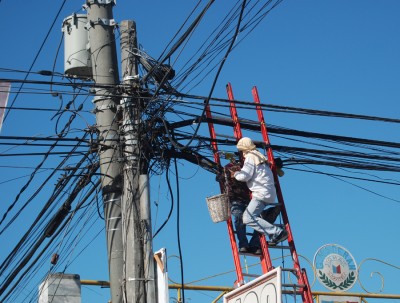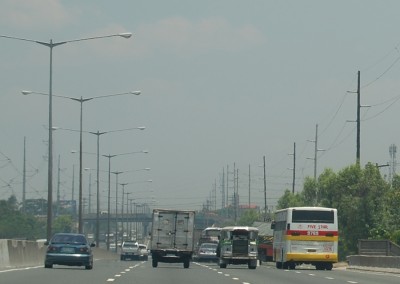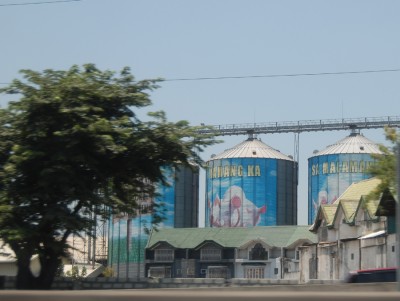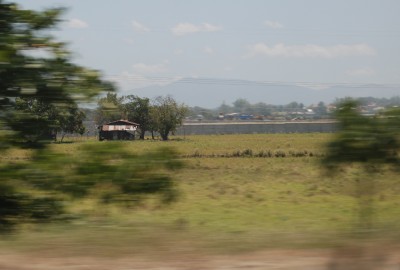8pm, MNL
We arrived in Manila along with the sunset. The islands east of Luzon faded into the metallic haze of the ocean as we descended.
In the airport, passing through Immigration was a breeze.
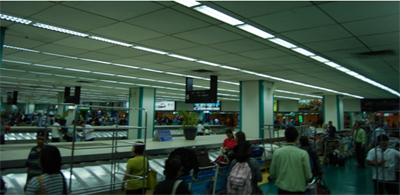
Waiting for us at baggage claim was our friend Alice, who had returned to the Philippines for work after 18 years in the United States. Alice was seated on the edge of the carousel with her head down, immersed in the world of her iphone. My eyesight, as low-res as the lousy pictures that come out of my CrackBerry, were having trouble processing all the vagaries and newness of the blue-toned, green-aired blur of space.
Our baggage arrived towards the end, governed it seems by a de facto rule that balikbayan boxes1, of which there was a symphony orchestra’s worth, have precedence over traditional luggage.
We passed without hesitation through Customs, both of us using the line marked ‘Returning Overseas Workers’. It seemed the better of the two options: the other line was marked “Items to Declare.”
—————————–
1 A balikbayan box is a square cardboard box of fixed dimension (24” x 24” x 24” ), usually white with the word “BALIKBAYAN” imprinted on it, which Filipinos who are returning to the islands from another country fill with gifts (pasalubong), clothing, electronics, etc. for their family. These boxes are ubiquitous in airports and are an integrated part of Filipino culture. For a more erudite discussion of balikbayan boxes, see “Balikbayan Boxes as Metaphors for Filipino American (Dis)Location”, by Jade Alburo.
—————————–
To drive or be driven?
The first overwhelming sensation to hit you when you step outdoors at Manila International Airport is a Pacquiao-like triple pounding of heat, noise and the smell of diesel exhaust. After 20 hours in a manufactured environment designed to reduce the likelihood of rebellion, this moist smoky cloud into which we’ve stepped is disorienting and goes a long way in explaining the verve of a people with a centuries-long history of fighting off foreign invaders.
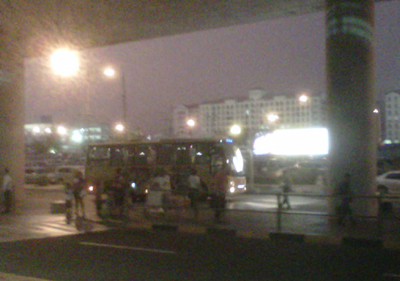
The first of a thousand logistical events that Arvin will have to address over the ensuring two weeks begins with car rental. The question: to rent and drive, or to rent and be driven.
Alice, unequivocably: “Get a driver.”
The relentless chatter of business taking place at the half dozen smoky enclosures at the rental car office elevates to a din. Taxis queue up outside. Cigarette smoke from idol cabbies weaves fractal patterns in the air. The heat creeps into the rental office whenever the door opens, defying the relief given by air conditioning.
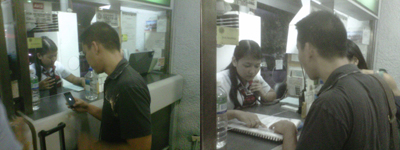
After some negotiation – mind you, sentences in Tagalog are shorter than in English but multitudinous; discussions are more extensive; it takes a greater number of words to arrive at a conclusion of similar length – after logistical task #1 is accomplished, we head to the parking lot, to Alice’s car. We will stay the night at her new townhouse in Manila. At ten a.m. the following morning a car with driver will pick us up at her place and deliver us to Arvin’s family in the province of Bulacan, vicinity of Malolos.
Grunting acceptance amid the chaos of perpetual motion
By the time we left the airport and walked to Alice’s car, everything was a muted shade of dark. The sky was dark. The parking lot was dimly lit. As we exited the airport and got lost in the flurry of horns and headlights, fluid car lanes, buses stopping erratically, jeepneys flooding the shoulders, Manila itself became lit up in patches by billboards and traffic, all of them muted in brightness by the weight of the heat.
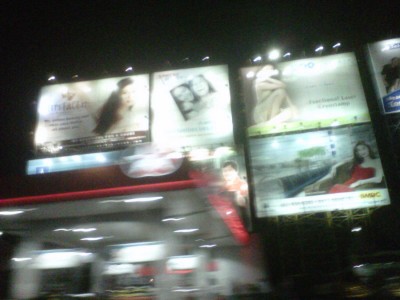
Billboards at Night – Manila, 2012
Along roadways both hurried and congested, where shadows of high-rises bit into the southeast asian night, we headed toward the Greenbelt, a modernist shopping and living zone on the fringes of Makati City, Manila’s financial district.
Alice grunted every time she hit the horn.
Traffic in Manila moves, in Alice’s words, like water molecules. Lines are painted on the roads but they’re merely suggestions of order. Drivers all jockey for position – buses, jeepneys, motorized tricycles, pedestrians and bicycles alike. Buses stop two lanes out from the curb to pick up passengers. “Everyone looks for an open spot and they sneak in, like water molecules in a funnel.” All this she discussed at rapid-fire pace as she wove in and out of empty spots in traffic. Well, not even empty spots: corners, wedges, bits of blank space which she transformed into openings for her benefit.
Given the sometimes slogging pace, though, and the relentless honking of horns, we seemed more like logs stuck in a downstreaming river.
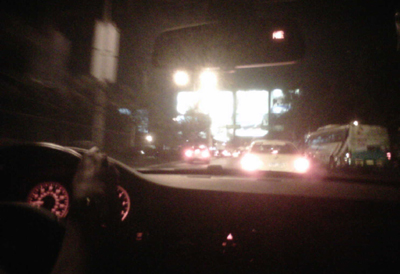
9.30pm Greenbelt, Makati City
The Greenbelt is a modern stretch of high-rises and a large new shopping mall, in the midst of all of which lies a long strand of outdoor restaurants and clever waterways. There are parallels in Europe – the outdoor plazas of Spain, France’s many outdoor café clusters, Gazi in Athens – but no equivalents.
In the US we have, perhaps, Riverwalk in San Antonio, or restaurant rows with open patios along seaside streets in beach towns. In the first woozy hours of post-arrival somewhere, it’s tempting to look for equivalence. Similarity. The goal of travel is to be awakened, though. To find the unfamiliar.
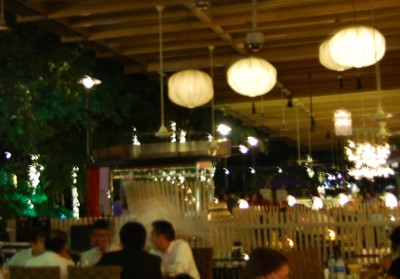
We three have a dinner of tapas and red wine. Eminently familiar, hardly foreign. We get caught up. Conversation between Arvin and Alice speeds forward. Accustomed as Alice had become to America, she’s having difficulty getting re-acquainted with the ways of the Philippines. Me, I’m far too recent an arrival to have formed an opinion yet.
Arvin doesn’t hide fatigue well. The conversation turns to the topic of chilling red wine – a favorite topic of mine, I could linger there endlessly. In the tropics, chilling red wine is a requirement. But enough on that. I can tell Arvin’s OFF button is quickly going to self-activate.
To Acacia Gardens. Quickly. In a blur of Alice’s fast-moving, shadow blue BMW.
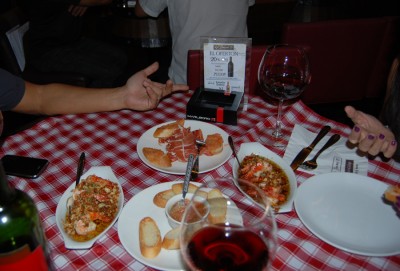
Greenbelt, Makati – Talking with Hands, 2012
I hate word press sometimes
11.30pm
Ahh…bed. The wormhole of time and space has caught up with us.
Blessed horizonal sleep.
